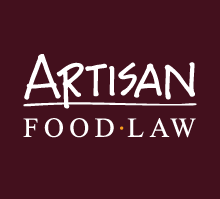Bits of bakery law
Above: Wood fired oven - in a smoke control area?
Some of you may be thinking that with Brexit looming what’s the point of a piece on bakery law? Well, it isn’t going to happen anytime soon, may take a decade or more and even then little may change. So, food law has been around a while, it all started with bread - the Assize of Bread and Ale 1266 - and what follows are a few highlights in the current state of play.
Think about what business structure will work best for you as a food business operator (FBO), for example, self-employed sole trader (make sure to register with HMRC), partnership or incorporated entity – but remember this does not protect a valuable brand name, consider registering a trade mark. When the going gets good and turnover exceeds £83,000, VAT registration is required.
Aside from all the generic health and safety considerations the main occupational health risk arises from exposure to flour dust. The Health and Safety Executive provide a useful starting point in establishing good management practice in small bakeries.
Bakery and all food law is possibly the most harmonised area of EU law which is rooted in general food law Regulation 178/2002. The operative principles established are based on risk management (including the precautionary principle) and the traceability of food between businesses (a step forward, a step back to enable a food recall) in which primary responsibility rests on the FBO to ensure that food is safe and meets prescribed requirements.
Food hygiene is a big deal and is comprehensively covered in a set of regulations known as the Hygiene Package – one deals with general hygiene, one for meat and animal products and a regulation which sets out the checks and controls. Under the general regulation, all FBOs must register premises details with the local authority at least 28 days before operations commence and whether or not run for profit.
FBOs must implement and maintain a permanent procedure based on the Hazard Analysis and Critical Control Points (HACCP) principles, in many ways a formalised common sense approach. The Food Standards Agency provides MyHACCP, a web-based tool to assist the small food business in this regard.
Labelling and advertising must not mislead consumers. In the case of unwrapped bread, a legal, customary or descriptive name must be provided on a label or otherwise clearly displayed (regulation 6 of The Food Information Regulations 2015 SI 2015/1855 and Article 17 of the food information to consumers (FIC) Regulation 1169/2011)
Most important is the requirement that bakeries selling unwrapped loaves make available information concerning the presence of any food allergens. Information may be provided orally, but an indication (on a label or clearly displayed notice) must be given that the information is available on request to a member of staff (regulation 5 of the 2015 Regulations). The failure to provide such an indication is a criminal offence carrying an unlimited fine even where no harm arises and without recourse to the use of an improvement notice.
A ‘gluten-free’ food is one containing no more than 20 parts per million of gluten while ‘very low gluten’ food may contain no more than 100 parts per million, but only foods with cereal ingredients specially processed to remove gluten may make a ‘very low gluten’ claim. If bread does not comply with these requirements it cannot be so described. A factual statement such as, where it is the case, ‘no gluten-containing ingredients’ and gluten has not been intentionally added can be made, but take care to manage possible cross-contamination from foods containing gluten. Remember, flour from spelt contains gluten (Article 3 of Regulation (EC) 41/2009 and see the FSA’s Guidance on the Composition and Labelling of Foodstuffs Suitable for People Intolerant to Gluten, January 2012).
Bread sold unwrapped must be accompanied by an indication of quantity provided on a ticket displayed in immediate proximity to the bread or displayed in a readily available manner for inspection before sale, a notice lists the bread made and indicates the quantity in which it is offered. This does not, however, apply to a 400g unwrapped loaf or a multiple of 400g (article 6(2) of the Weights and Measures (Miscellaneous Foods) Order 1988 SI 1988/2040 as amended by The Weights and Measures (Specified Quantities) (Unwrapped Bread and Intoxicating Liquor) Order 2011 SI 2011/2331). Lastly, on the subject of bread weights, section 78 of the Consumer Rights Act 2015 repealed, with effect from October last year, the requirement to keep records of weight checks of unwrapped bread.
You may use organic flour, but if you want to sell ‘organic bread’ registration with an approved organic control body and inspection is first required under Regulation (EC) 834/2007 which sets the criteria for organic production and labelling. Once approved, the use of the EU organic logo is compulsory.
The words ‘wholemeal’ and ‘wheat germ’ are regulated (regulation 6 of the Bread and Flour Regulations 1988 SI 1988/141) and in labelling or advertising must not be used as a part of the name of the bread, whether or not qualified, unless, in the case of ‘wholemeal’, all the flour used is wholemeal and, in the case of ‘wheat germ’, the bread has an added processed wheat germ content not less than 10% calculated on the dry matter of the bread and, by the way, ‘GRANARY’ is a trademark of Hovis.
Finally, for all the wood fired oven fans with the misfortune to live in a smoke control area under the Clean Air Act 1993 the available options have grown in recent years. There is now a wider selection of approved ovens and fuels available.
A shorter version of this article first appeared in the Real Bread Campaign’s magazine True Loaf, Issue 29, October – December 2016 and is reproduced here with hyperlinks for easy access to all the sources mentioned and other stuff.





